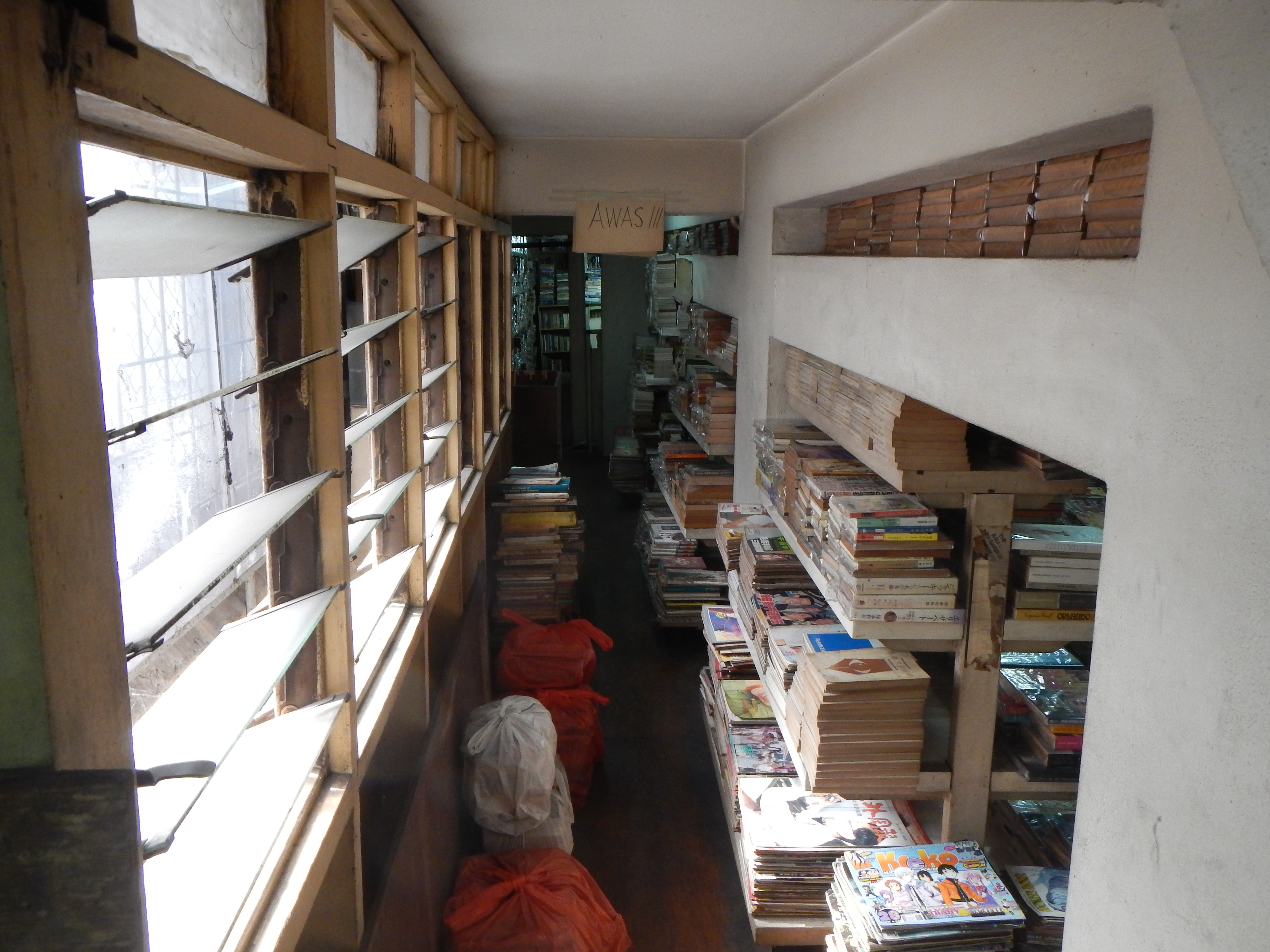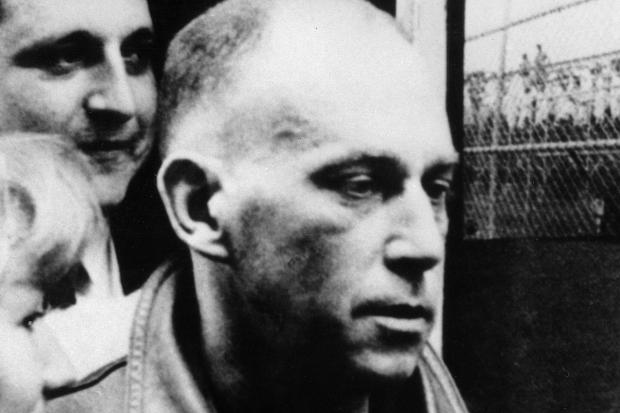Walter Benjamin’s ‘Unpacking My Library’ (1931) is an illuminating account of the loving relationship that can exist between readers and their books. Whilst stocking his shelves, Benjamin speaks of
the spring tide of memories which surges toward any collector as he contemplates his possessions. Every passion borders on the chaotic, but the collector’s passions borders on the chaos of memories. More than that: the chance, the fate, that suffuse the past before my eyes are conspicuously present in the accustomed confusion of these books.i
The collection of books and its owner fuses into a disorderly jumble of mind and matter. The idea of ownership is ambiguous, here: the books possess their owner as much as the owner possesses the books. The metaphorical bookworm is in a dialectical power relationship with the objects it inhabits: “inside him there are spirits, little genii, which have seen to it that for a collector – and I mean a real collector, a collector as he ought to be – ownership is the most intimate relationship that one can have to objects. Not that they come alive in him; it is he who lives in them.” ii
Benjamin identifies a close, even fetishist relationship between books and readers, between material object and the mind, yet this connection is potentially deeply troubling. This is demonstrated in an incisive passage early on in F. Scott Fitzgerald’s The Great Gatsby (1923), in which the protagonist is first exposed as a poseur. When the narrator, Nick Caraway, enters Gatsby’s impressive, Gothic library, ‘panelled with English oak, probably transported from some ruin overseas’, a ‘stout, middle aged man with enormous owl-eyed spectacles’ tells Caraway that, to his surprise, the books are ‘real’ (Loc 668). The inebriated man gestures towards the book-shelves and states:
“Absolutely real—have pages and everything. I thought they’d be a nice durable cardboard. Matter of fact, they’re absolutely real. […] It’s a bona fide piece of printed matter. It fooled me. This fella’s a regular Belasco. It’s a triumph. What thoroughness! What realism! Knew when to stop too—didn’t cut the pages. But what do you want? What do you expect?”iii
An implicit point made here is that Gatsby has not actually read any of these books.We realise that Gatsby’s tales about his days as a sophisticated Oxford man, of which the library is a (false) reminder, are just a few of many fabrications. Yet, just as in Benjamin, this again suggests that there exists a direct relationship between a library’s content, and our personal history, knowledge and identity. Gatsby’s past is represented by, and his knowledge expressed through, his books; the library is Gatsby, a bookworm boring his way through endless shelves of knowledge. The drunk, owlish man is not fooled, however: as the reference to theatre impresario, actor and director David Belasco suggests, he already understands that Jay Gatz is a ‘great’ performer, who has created an elaborate stage set that allows him to project a more glamorous, wise version of himself.
This uneasy relationship between physical books and readers deserves renewed investigation in the early twenty-first century. We are currently living through a period when, with the many forms of electronic reading taking off in a significant manner (from reading on our computer screens to e-readers such as Amazon’s Kindle), our bookshelves no longer contain everything we’ve read. This digital turn potentially creates a de-stabilising rupture in the already fraught, complex relationship between the materiality containing (or referring to) our knowledge, and our identity.
Many critics are warning against the onslaught of the digital on the material, especially when it comes to reading. In Proust and the Squid (2007), Maryanne Wolf states: ‘I do wonder whether typical young readers view the analysis of text and the search for deeper levels as more and more anachronistic because they are so accustomed to the immediacy and seeming comprehensiveness of the on-screen information—all of which is available without critical effort, and without any apparent need to go beyond the information provided.’iv In The Shallows (2010), Nick Carr warns against the danger the internet poses to our ability to concentrate and engage in deep thinking; indeed, the digital presents us with the potential loss of an ‘intellectual ethic: the ethic of the book.’v In Changing Our Textual Minds (2011), Adriaan van der Weel warns again the disappearance of the ‘Order of the Book’ into a ‘digital textual docuverse [which] in turn becomes part of the all-digital array of mediums converged in the WorldWide Web.’vi In short, for many critics, whose responses range from the elegiac to the apocalyptic, the Internet equals brain rot.
Today’s technologies are thought to scatter our minds. Carr refers, for instance, to the outsourcing of our cognitive processes (memory to Google and spatial navigation to GPS, et cetera). With a wink towards Freud, who in Civilization and its Discontents (1930) called people prosthetic Gods because they are looking for ‘palliative measures’ and ‘auxiliary constructions’ to negate the painful limitations of our human condition,vii this process results in what I’d like to call the Age of the Prosthetic Mind. More than ever before we have tools at our disposal to extend our bodies and minds. But rather than turning us into gods, critics are worrying that these new ‘tools’ have a detrimental effect upon human nature.
We might question what these technologies are doing to our identities. Although, isn’t the idea that the bookshelves, CD collections and photo albums once gathered in our living room somehow tell our story actually just a little fantasy? The psychophysiological relationship between our collections and us is complex, as the mind will always re-invent our selves and our pasts in fascinating ways. One might then argue that the physical books on our shelves and those on our e-reading devices will be yoked together by the mind into a continuum of readerly experiences anyway.
Two points of caution. Van der Weel argues that digital reading is a lesser experience to reading in print, and that the computer’s typographic possibilities cannot do justice to much of the richness and precision of typographic expression.viii
I would like to point out that the psycho-physiological experience of reading a material novel is completely different from e-reading novels. At the University of Roehampton, I conducted an experiment with e-reading on my module ‘The Poetics of Surveillance’, which traces the various modes of observation throughout literary history. All students were loaned Kindles. After a slow start – some students had trouble quickly finding particular passages for close reading exercises – they got the hang of it. We used a relatively early version of the Kindle, not the Kindle Fire, and it proved a rather clunky device mainly because the navigability is limited: the human brain in conjunction with the wonderful tools we call hands and physical books are much quicker in jumping to different pages in the text.
During a debriefing the results of the experiment were overwhelmingly clear. Although students enjoyed the experience in general and liked reading on the device (not least because it was easy and light to carry around, and allowed them to download the many texts they were studying across modules), they found it difficult to think and refer back to specific pages and passages quickly when discussing a novel in class. When working with physical books one tends to know where to locate a passage (top, middle or bottom, and left or right hand side of the page; towards beginning, middle or end of the novel). They also had problems making connections with books studied just weeks earlier, which impaired their ability to write comparative essays.
This problem is, I suspect, twofold. First, electronic reading will require us to re-train our brains to read and remember text differently, if that is possible. Secondly, this problem is specific to the study of the novel form, which has a very particular four-dimensional architecture which takes shape as a physical and cognitive process in what we call the imagination. The owl-eyed man in Gatsby’s library knows this. As Fitzgerald later notes about Gatsby:
Each night he added to the pattern of his fancies until drowsiness closed down upon some vivid scene with an oblivious embrace. For a while these reveries provided an outlet for his imagination; they were a satisfactory hint of the unreality of reality, a promise that the rock of the world was founded securely on a fairy’s wing.ix
The ‘reality’ of the material world (‘the rock of the world’) as a potential expression of oneself is, as Gatsby instinctively understands, itself dependent upon intricate processes of subjective perception, interpretation and the imagination (‘a fairy’s wing’). While Gatsby’s library contains books as a fictional construct of his identity, our Age of the Prosthetic Mind offers more diverse ways of creating realities and more forms for remembering ourselves. This presents us with a provocative truth about our late modern times: although we may sometimes feel we are losing solid ground beneath our feet, outsourcing (or freeing up or working memory?) our minds, memory and identity to technological and digital prostheses, the processes we are living through (the multiplicity of formats, the temporal complexities, the simultaneity and non-linearity of the contemporary experience) are, more so than the static, linear ordering of the library, a much more accurate reflection of how consciousness and memory work. The mind and memory are a jumble of thoughts, impressions, and continuous re-rememberings .
It was Benjamin who pointed out that he was concerned with giving us ‘an insight into […] collecting rather than a collection.’x Memory is not a place but a process of continuous making and remaking. I suspect that, for us book worms, a reading experience in which the digital is dominant, will make for a very poor diet. One might as well keep the pages uncut and pretend.
The author would like to thank staff and postgraduate students at the University of Amsterdam for their insightful comments and illuminating discussion during the research seminar which helped to develop this Exchange. He would like to thank Alison Waller for remembering Walter Benjamin.
i Walter Benjamin, ‘Unpacking my Library’, in Illuminations, trans Harry Zohn. New York: Schocken, 1999. (59-67), p. 60.
ii Benjamin, 67.
iii F. Scott Fitzgerald, The Great Gatsby. Green Light E-books, 2011. Loc 668. Originally published in 1925.
iv Maryanne Wolf, Proust and the Squid: the Story of Science the Reading Brain (Cambridge: Icon, 2008), p.225. Originally published in the USA by HarperCollins in 2007.
v Nicholas Carr, The Shallows (London: Atlantic, 2010), p. 67. First published by W. W. Norton in New York in 2010.
vi Adriaan van der Weel, Changing Our Textual Minds (Manchester and New York: Manchester University Press, 2011), p. 2.
vii Sigmund Freud, Civilization and its Discontents, trans. James Strachey (New York: W. W. Norton, 1962), p.22. First published in German as Das Unbehagen in der Kultur in 1930.
viii See Adriaan van der Weel, ‘Feeding Out Reading Machines’, July 2, 2012, Parlance, http://www.themediares.com/pages/parlance/reading-machines.html [Accessed 2 march, 2013]
ix Fitzgerald, Gatsby, Loc 1439.
x Benjamin, 59-60.


